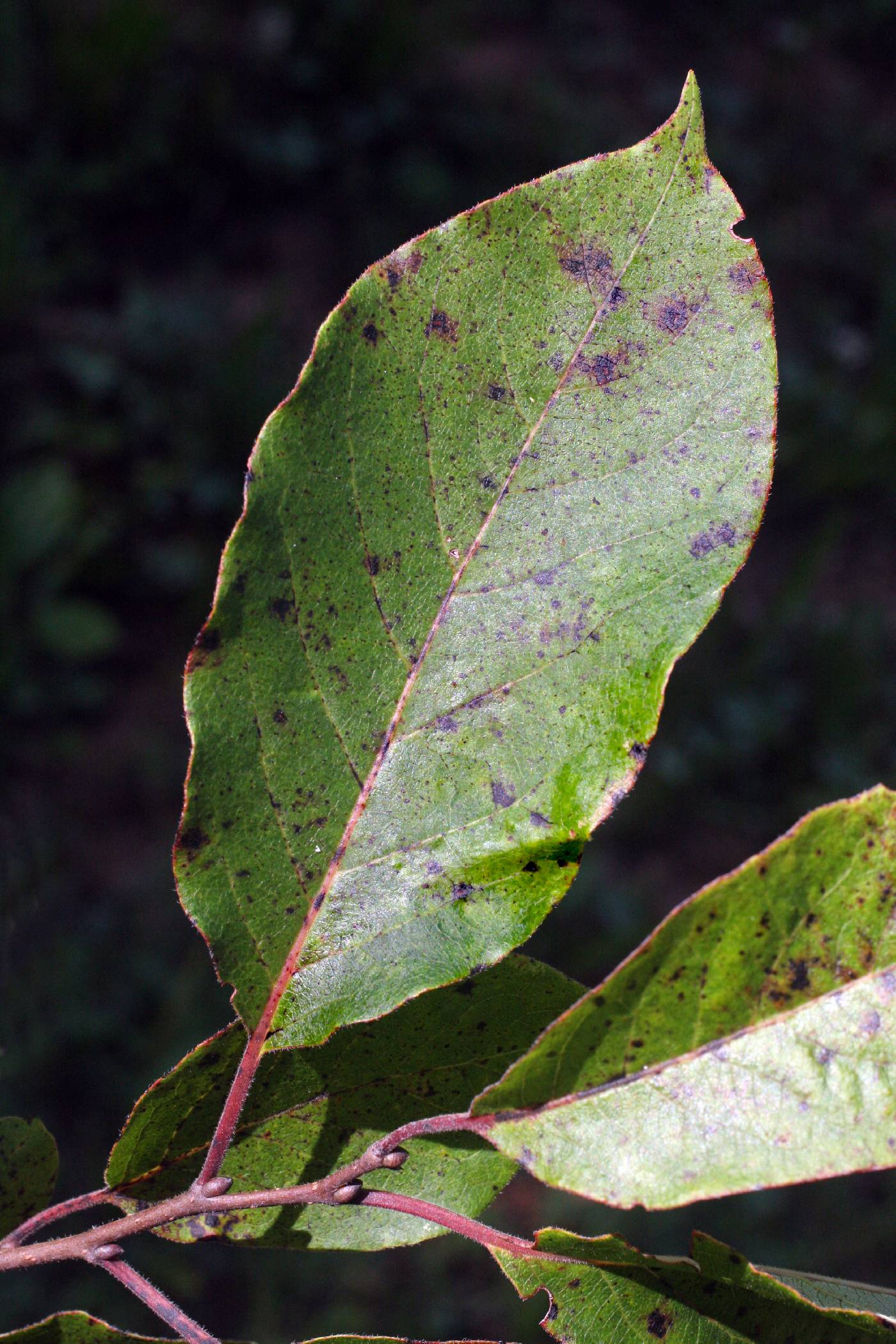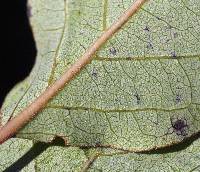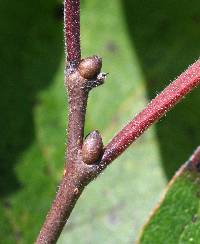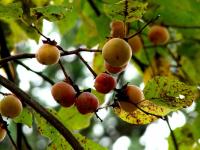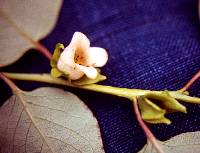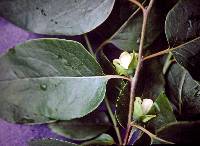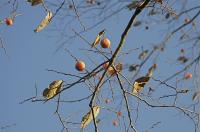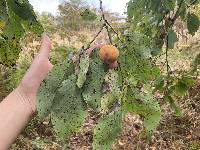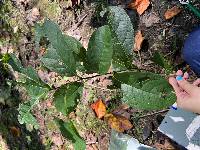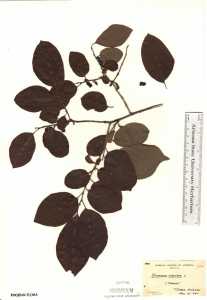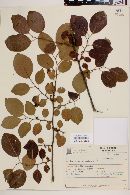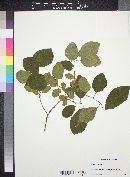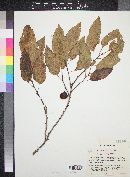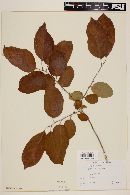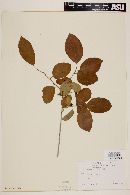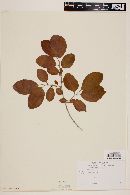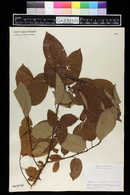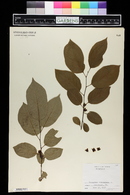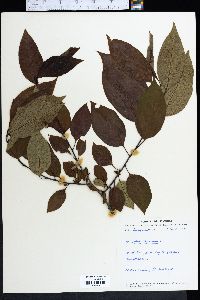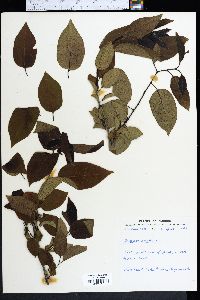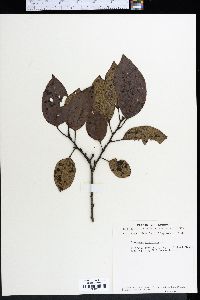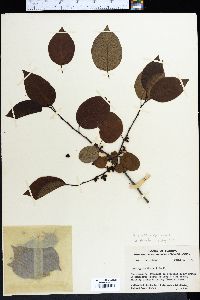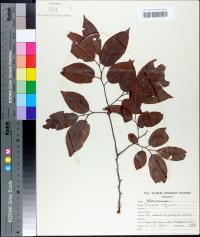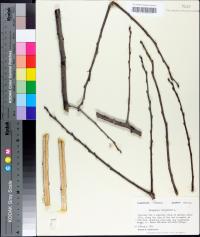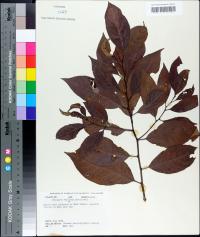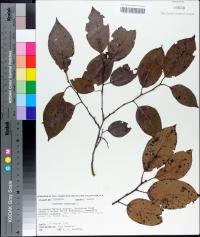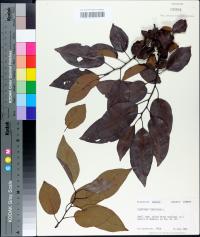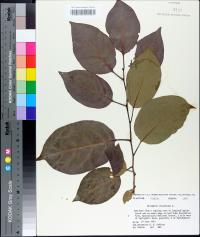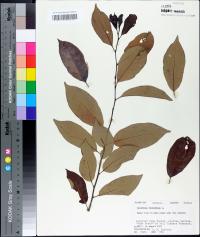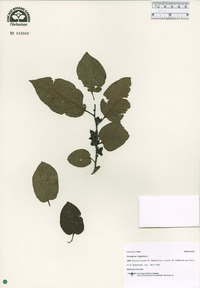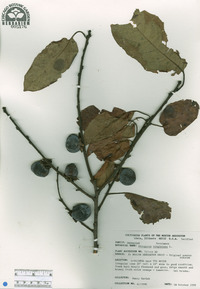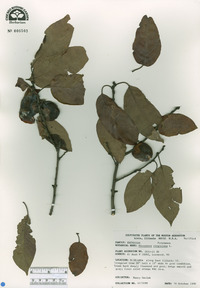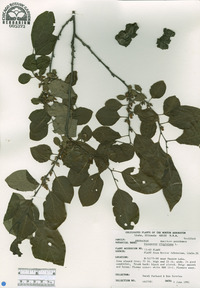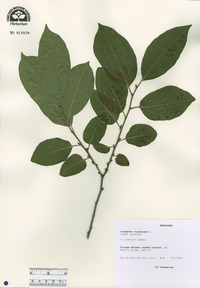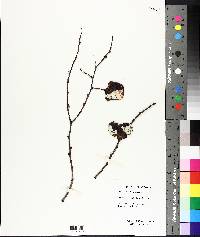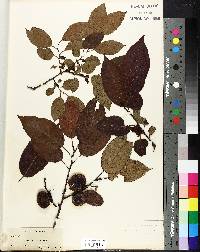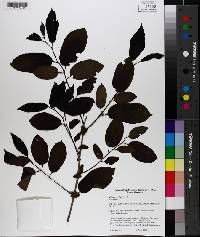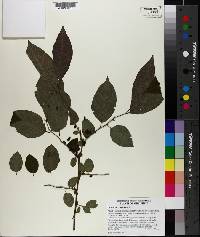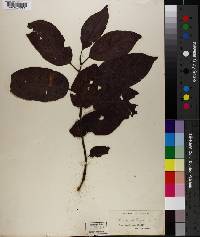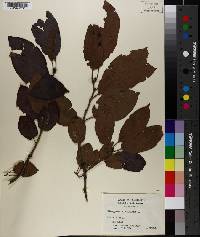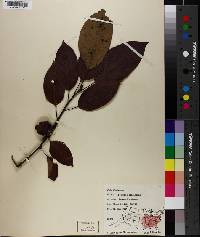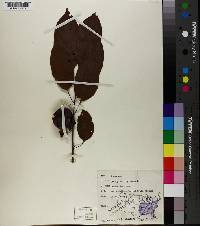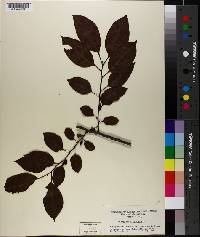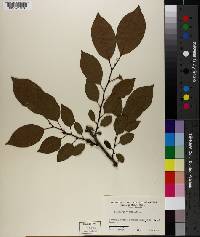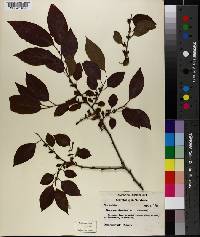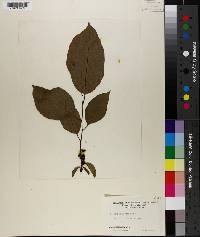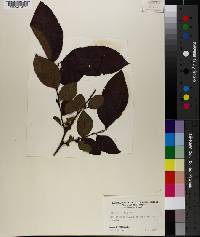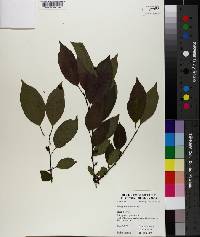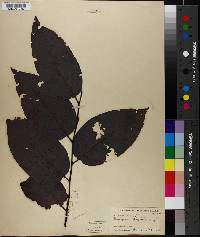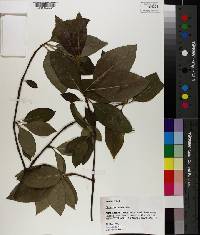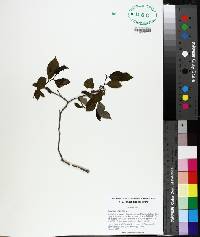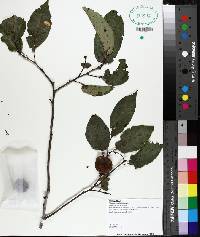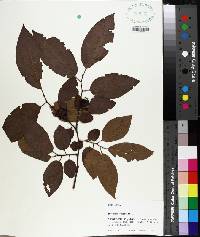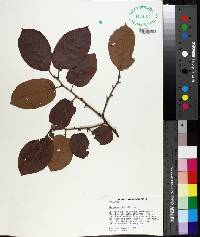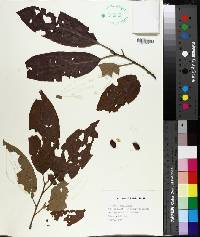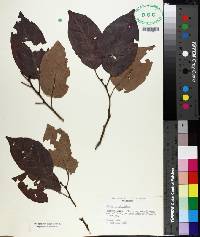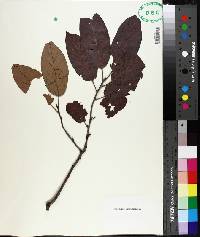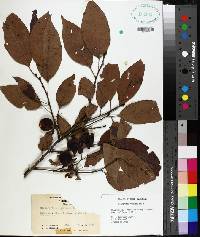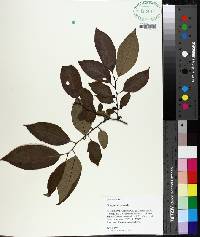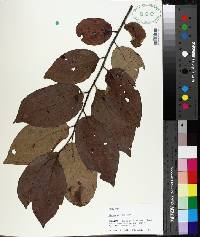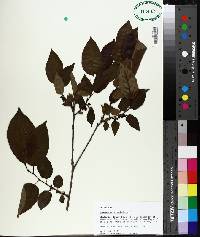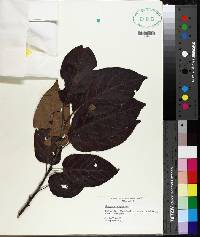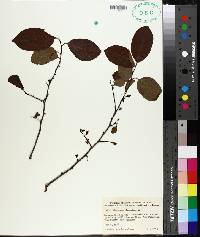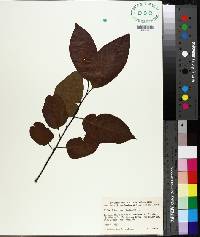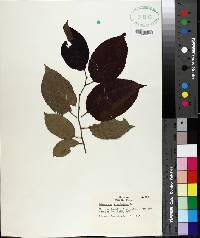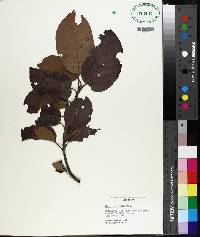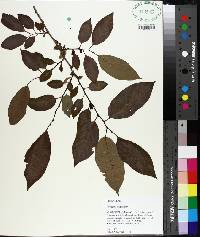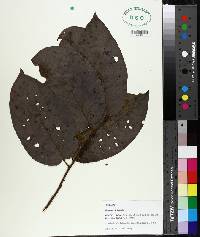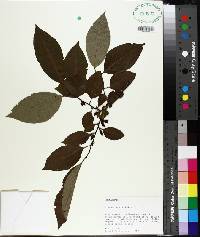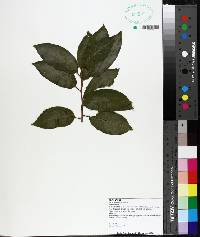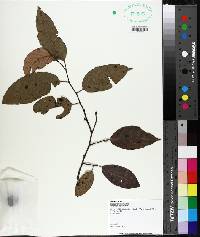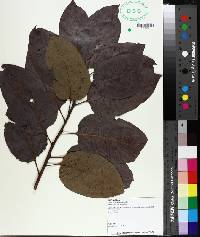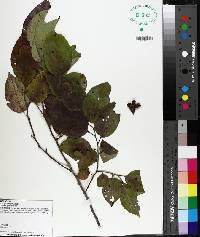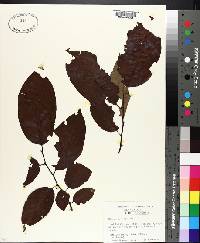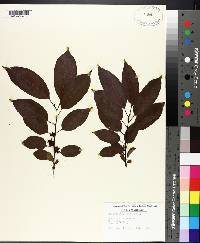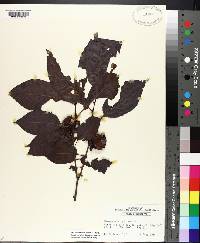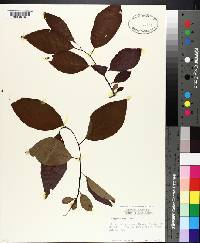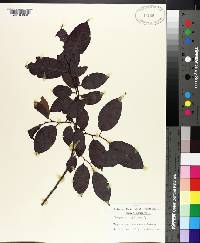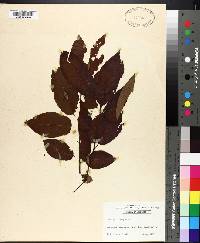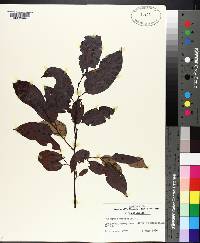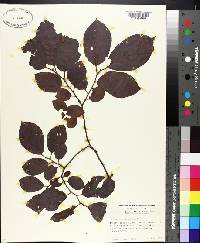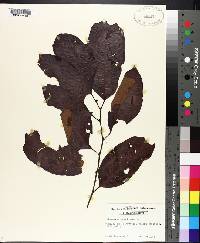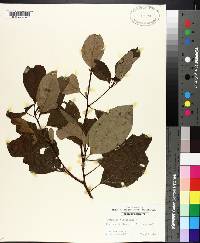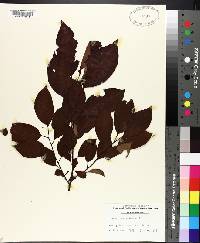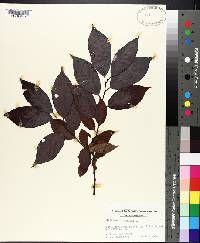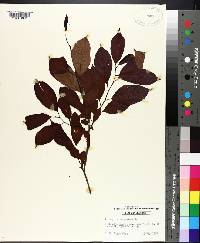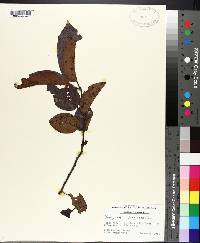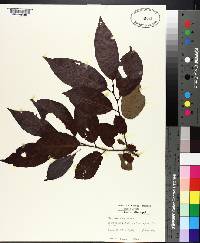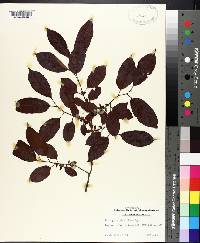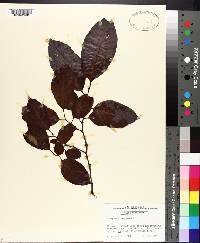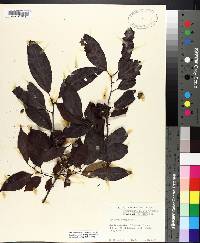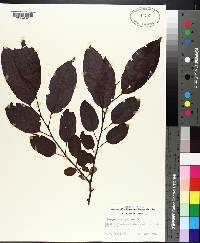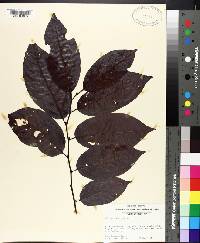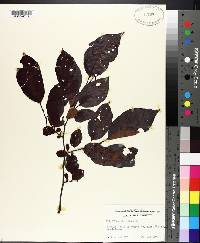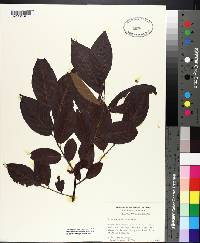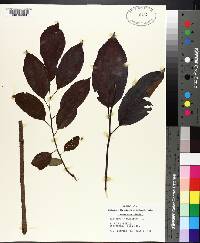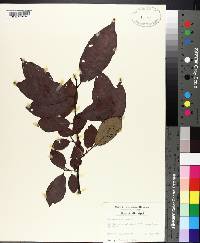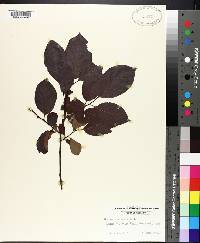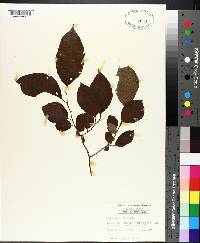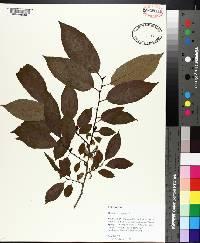Diospyros virginiana
|
|
|
|
Family: Ebenaceae
Common Persimmon
[Diospyros lucida Loudon, moreDiospyros mosieri S.F.Blake, Diospyros virginiana f. atra Sarg., Diospyros virginiana f. pumila E.J.Palmer & Steyerm., Diospyros virginiana var. mosieri (Small) Sarg., Diospyros virginiana var. platycarpa Sarg., Diospyros virginiana var. pubescens Nutt., Diospyros virginiana var. virginiana] |
Trees, to 15-30(-40) m. Bark dark reddish brown, deeply furrowed and irregularly blocky, not flaking. Leaves deciduous; petiole 0.7-1 cm; blade dark green and glossy adaxially, broadly ovate to elliptic, (5-)6-15 × 2.5-8 cm, thin, apex acute to acuminate, abaxial surface glabrous (or sparsely pubescent, especially when young), without basilaminar glands. Inflorescences solitary flowers or 2-3-flowered cymes, borne on twigs of current season. Flowers 1-2 cm; sepals 4; petals 4; stamens 16; anthers dehiscent along their entire length; pistillate flowers usually with 8 staminodes; styles 4, connate basally; ovary glabrous (except at apex). Berries yellow to orange or dark red (rarely purple), often glaucous, depressed-globose, globose, oblong, ovoid, or conic, (2-)3-5(-7.5) cm diam., glabrous (except at apex). Seeds reddish brown, ellipsoid, ca. 1.5 cm. 2n = 60, 90. Flowering Mar-Jun; fruiting Aug-Dec. Forests, seasonally flooded bottomlands, dry ridgetops, abandoned agricultural land; 0-1100 m; Ala., Ark., Conn., Del., Fla., Ga., Ill., Ind., Iowa, Kans., Ky., La., Md., Miss., Mo., N.J., N.Y., N.C., Ohio, Okla., Pa., S.C., Tex., Va., W.Va. The extensive morphological variation in Diospyros virginiana, coupled with variable chromosomal races, merits further taxonomic study. Pubescent leaves and purple fruits, most common in the Ozark region, suggest past hybridization with D. texana. These and other distinctive traits may characterize whole clonal groves through root-suckering. The fruits were an important food for wildlife, native peoples, and Euro-American colonists, but have never been effectively commercialized, despite selection of superior clones over the years. Wild persimmons are extremely astringent until thoroughly ripe. The tough, hard wood has been used for shuttles and heads of golf clubs.
Tree to 15 m, sometimes colonial, with deeply furrowed and cross-checked bark; lvs oval or oblong, 8-15 cm, shortly acuminate, on petioles 1-2 cm; fls greenish-yellow, the staminate solitary or 2-3 together, 1 cm., with usually 16 linear, acuminate anthers about as long as the cor-tube, the pistillate solitary, 1.5-2 cm, with larger cal and usually 8 sterile anthers; ovary mostly 8-locellar; fr yellowish-brown, 2-4 cm thick, edible after frost; 2n=60, 90. Mostly in dry woods; se. Conn. and s. N.Y. to Fla., w. to Io., Kans., and Tex. Var. virginiana, chiefly e. of the Miss. R., has glabrous twigs with thin lvs acute or cuneate at base and glabrous or nearly so beneath. Var. pubescens (Pursh) Dippel, chiefly w. of the Miss. R., has hirsutulous twigs with firm lvs broadly cuneate to rounded or subcordate at base and usually thinly but permanently hairy beneath. Gleason, Henry A. & Cronquist, Arthur J. 1991. Manual of vascular plants of northeastern United States and adjacent Canada. lxxv + 910 pp. ©The New York Botanical Garden. All rights reserved. Used by permission. From Flora of Indiana (1940) by Charles C. Deam This tree was doubtless a native of southern Indiana from Franklin County to Parke County and southward. Probably introduced northward. For the most part it is a scattered tree throughout this area, occurring more frequently and in greater abundance in the unglaciated area. It is found most frequently in dry ground but in the southwestern counties it is found in low ground where it reaches its greatest size. In old abandoned fields it forms thickets, due to its ability to spread from root shoots. ...... Indiana Coefficient of Conservatism: C = 2 Wetland Indicator Status: FAC |
|
|
|

